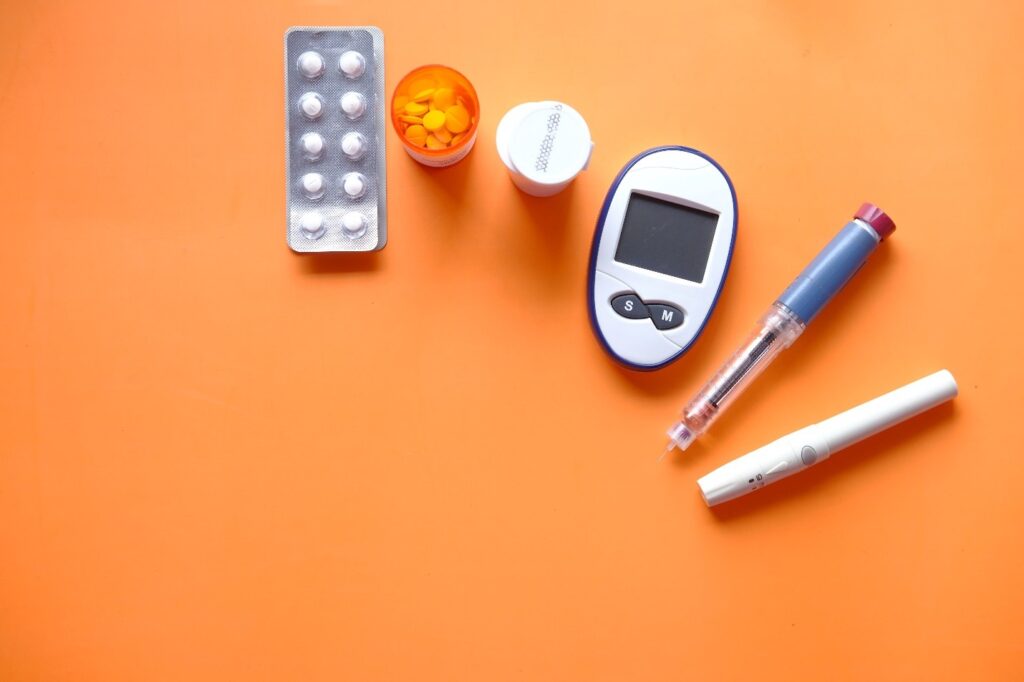Introduction
When you have diabetes, you should check your blood glucose levels at various times of the day and throughout the year. There are numerous methods available to help in achieving this and, as a result, maintaining your diabetes: A blood test every three months, a blood test every day, and a device that continually checks your blood glucose. However, the essential thing anyone can do to control type 1 or type 2 diabetes is to measure daily blood sugar levels.
The following are some tips and methods for monitoring and preventing low blood sugar:
1. Urine Testing
This is the most basic type of diabetes test. It is, however, imprecise. The main drawback is that urine sugar will only be positive if the blood sugar level surpasses the kidney limit. Unfortunately, most people experience this when their blood sugar level rises beyond 180 mg/dl. As a result, it merely serves to check if the blood sugar level crosses the alert threshold. The second drawback is that hypoglycemia or low blood sugar levels are more dangerous than hyperglycemia and can never be diagnosed by monitoring. Finally, urine sugar levels can never be analyzed.
2. Blood Testing
Blood testing provides more precise blood sugar readings. Two distinct strategies are employed to create valuable equipment for testing blood sugar. First, photometric meters use colored reflection measurements to detect the color change induced by glucose in the blood on a striped plate. An alternate approach is an electrochemical measurement, in which glucose in the blood causes a response on the test strip, creating a slight current. The meter senses the current and displays a digital test result.
3. Obtaining an A1C Testing
Make an appointment for an A1C test at least twice a year. Specific individuals may require the test more frequently than others, so listen to your doctor’s advice.A1C results show your average blood sugar level over three months. A1C readings may differ in patients with hemoglobin disorders, such as sickle cell anemia. Consult your doctor to determine the appropriate A1C target for you. Take your doctor’s advice and suggestions seriously.
The A1C result will be sent in two formats:
- A1C is expressed as a percentage.
- Estimated average glucose (eAG), expressed in the same units as your daily blood sugar measurements.

4. Using A Blood Glucose Meter
A blood glucose meter is used for the regular blood test (BGM). This is also known as a blood sugar meter at home, a glucose monitor, or a glucose meter. This pattern of testing is also known as self-monitoring of blood glucose. If your blood sugar levels vary, your doctor may recommend a BGM.
- A BGM detects the quantity of glucose in a drop of blood at that precise moment.
- The blood from your finger is placed on a test strip, which is then interpreted by the display.
Regular testing throughout the day might allow you to improve blood sugar management. In addition, these data can be used to make suitable changes to your diet, exercise, insulin, or the doses of other medications.
Treatment Of Low blood sugar
A blood sugar level of less than at least 55 mg/dL is considered dangerously low. Make sure your family, friends, and caregivers are aware of your common blood sugar symptoms so they can assist you in treating them if necessary. When blood sugar levels fall, the objective is to raise them swiftly. To do so, consume sugar or sweet meals, which swiftly elevate blood sugar levels. In addition, the medical experts may recommend that you:
- Consume, drink, or ingest something with sugar that can enter the bloodstream fast. The doctor may recommend you to consume highly sugary foods or beverages (such as ordinary coke, orange juice, or cake icing)
- Doctors may prescribe glucose pills or gel to take – all of these can assist to quickly boosting your blood sugar level, which is what you need to do when it is low.
- Allow the sugar to work for around 10 minutes.
- Recheck your blood sugar levels using a glucose meter to determine whether they have returned to normal.
- If your symptoms are severe or worsen after eating, drinking, or taking glucose, obtain a glucagon injection (see below).
Here are some additional strategies to help you avoid low blood sugar levels:
- Consume all of your snacks and meals on schedule and strive not to neglect any.
- Take the appropriate dose of insulin.
- Have extra food if you work out longer or harder than usual.
- After an insulin injection, do not take a hot bath or shower.
- Maintain your diabetes control strategy.
- Monitor your blood sugar levels frequently to detect if your blood sugars are too low and your treatment regimen has to be adjusted.
Conclusion
It will be noticeable to observe what causes your readings to rise or fall, such as consuming various meals, using any medication, or exercising. With this knowledge, one can collaborate with the medical insurance team to determine the optimal diabetes treatment strategy. Diabetes consequences such as cardiac arrest, strokes, renal disease, decreased eyesight, and amputation can be delayed or avoided by making these choices.


